What if we told you that keeping a ceramic hob clean is crucial for both aesthetic and hygiene reasons? Regular cleaning not only maintains the hob’s appearance but also prevents bacteria buildup and ensures optimal cooking performance by promoting even heat distribution. You just require a few cleaning materials, such as baking soda, warm water, and a damp microfibre cloth, and you are good to go. Is this not enough? Well, get into the details of how to clean a ceramic hob (or a glass hob, gas hob, or induction hob, for that matter) safely and effectively, without having to resort to the services of a professional cleaner.
Equipment Needed to Clean a Hob
Even though you can go for the most expensive hob cleaning product that you find in your local supermarket – and it may do a good job – you don’t need to readjust your budget to get the job done. With some simple cleaning equipment that is usually found in every home, you can sanitize your ceramic hobs with ease, and in the safest manner possible. Some warm soapy water and dry fiber clothes are a must when cleaning ceramic hobs and glass hobs alike. The warm water is typically enough to break down the most common types of food residue on the ceramic hob’s surface, while the microfiber cloth will help you remove the loose debris and remaining residue from the surface of the hob without scratching it. Using more abrasive materials is not advisable, as it may cause scratches that will not only make your ceramic hobs look bad, but also not function properly. Avoid abrasive cleaners to prevent scratching the surface.
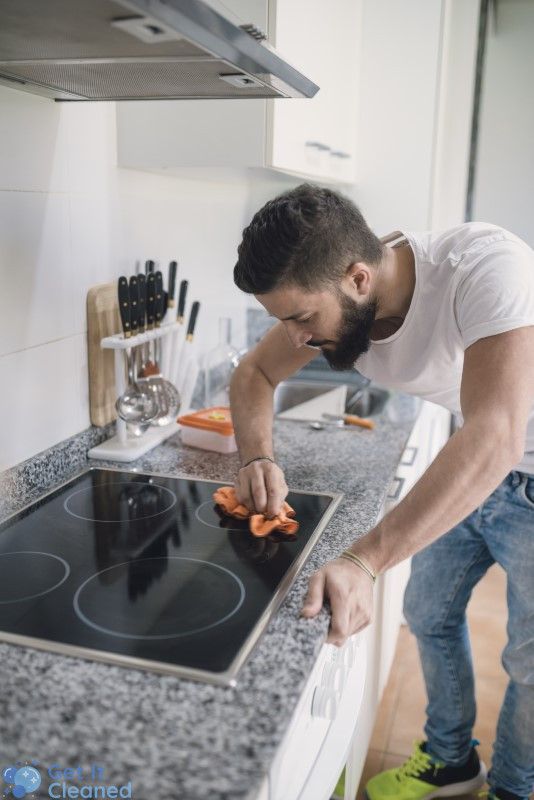
Using a soft cloth is essential to prevent scratching and ensure the longevity of the hob’s surface.
For stubborner grease, burn marks, and caked on the food you might need the heavy artillery. Burn marks and even food remnants are easily removed from the hob’s rings and the hob surface by using the time-tested mix of baking soda and white vinegar. The white vinegar will disintegrate the food remnants and the burn marks, while the soda has a mildly abrasive quality that is enough to remove the residues from the hob’s surface without actually damaging it. Naturally, you will need a dry microfiber cloth to wipe everything off again.
If you are not a fan of do-it-yourself cleaning solutions, you can substitute the baking soda and vinegar solution with a dedicated ceramic hob cleaner. Just read the label of the cleaning product you are considering buying to make sure it does not contain any harsh chemicals that may pose a health risk to yourself or other members of your household. The good news is that in recent years many companies have produced mild, eco-friendly dedicated hob cleaners that should be powerful enough to help you shine your glass hobs, gas hobs, and even hard-to-reach parts of the hob rings with relative ease.
A soft sponge and a kitchen roll are other indispensable tools when doing regular cleaning, and even heavy-duty sanitation that is outside the realms of your daily cleaning routine.
Step-by-Step Cleaning Guide
The basic steps for cleaning ceramic hobs are as follows:
- Gently wipe the surface of the hob with a moist microfiber cloth to remove dust and loose dirt, including loose food particles. A microfibre cloth is effective for removing stains and preventing scratches.
- Create a paste of 1:1 parts baking soda and white vinegar and smear it on the stubborn spots. Alternatively, use a dedicated hob cleaning product.
- Scrub gently the area under the paste with a microfiber cloth.
- Apply white vinegar alone to burnt marks. Let it sit on the burn mark for fifteen minutes and use a microfiber cloth or a paper towel to scrub the vinegar along with the burn mark.
- Use the hob scraper for burnt-on food spills. Keep your motions light to avoid scratching the hob’s surface.
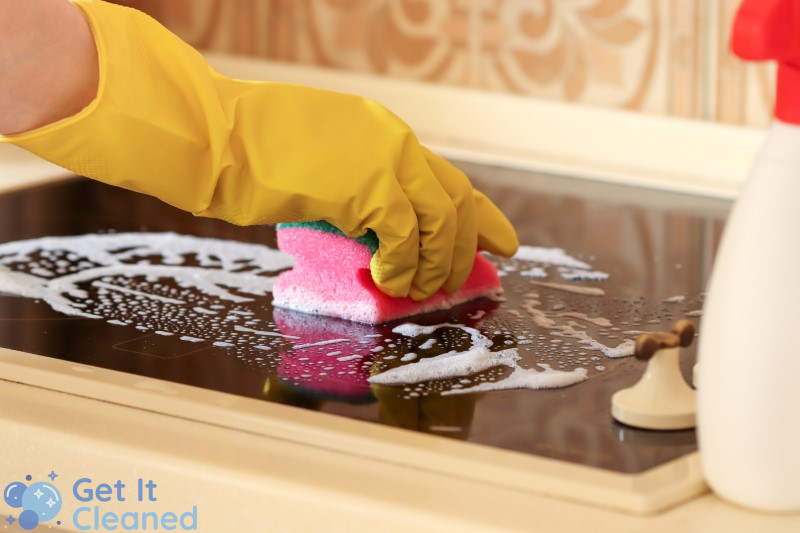
You can repeat the process as many times as necessary to bring the shine back to your ceramic hobs. Make sure to consult the user manual that came with the hobs to check if the manufacturer has any recommendations as to the way your hobs should be treated.
Can you use CIF ceramic hob cleaner on a ceramic hob?
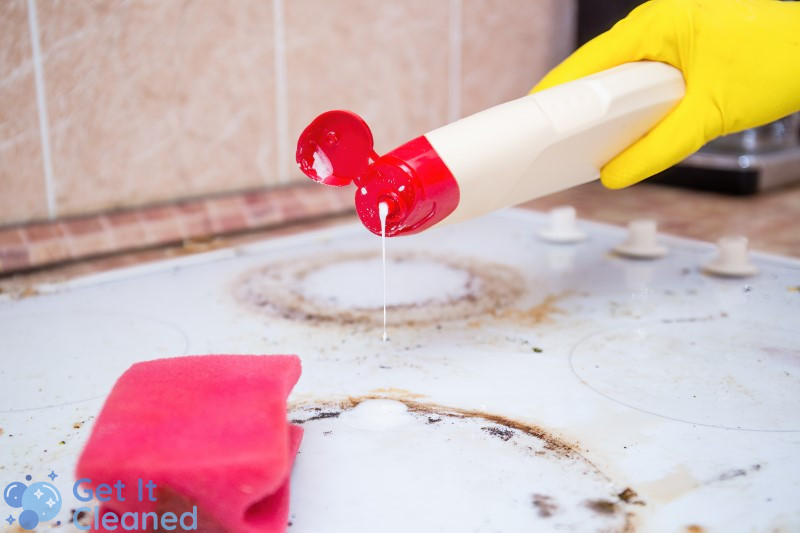
Proper ceramic hob cleaning methods are crucial to avoid damage. Most manufacturers advise against using highly abrasive cleaners like CIF, even for deep cleaning ceramic hobs, as they are more likely to damage the glass surface of the hob than dedicated hob cleaning products and water.
Can I use a scraper on a ceramic hob?
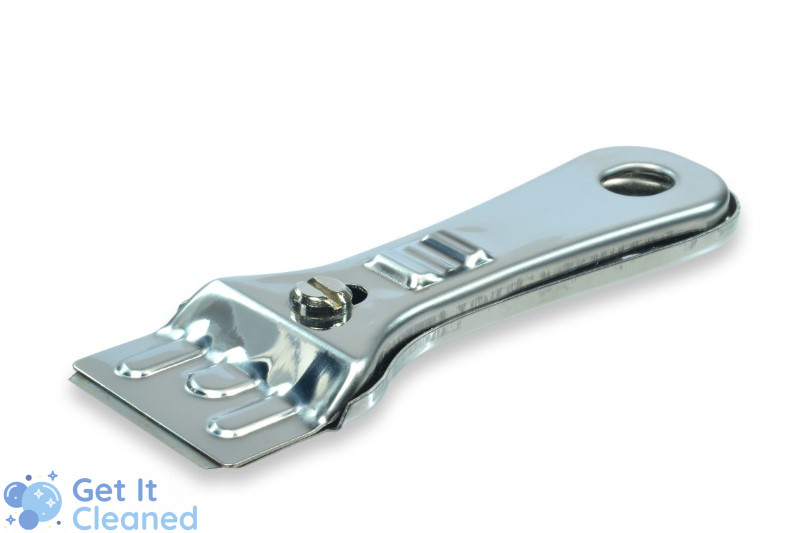
While looking at the cleaning equipment in your local supermarket, you might come across a tool called a ceramic hob scraper. The hob scraper is one of the most important tools for tackling the challenges of removing stubborn stains, such as caked-on food and other heavy-duty spills, from your ceramic hobs. The ceramic hob scraper is designed in such a way that it won’t damage the surface of your glass hobs. If you are planning on doing more than regular maintenance on your ceramic hobs, it is highly advisable that you get yourself a plastic scraper. You will find it infinitely more useful in making your ceramic hobs shine than even harsh chemicals that promise you to remove any caked-on food without you lifting a finger.
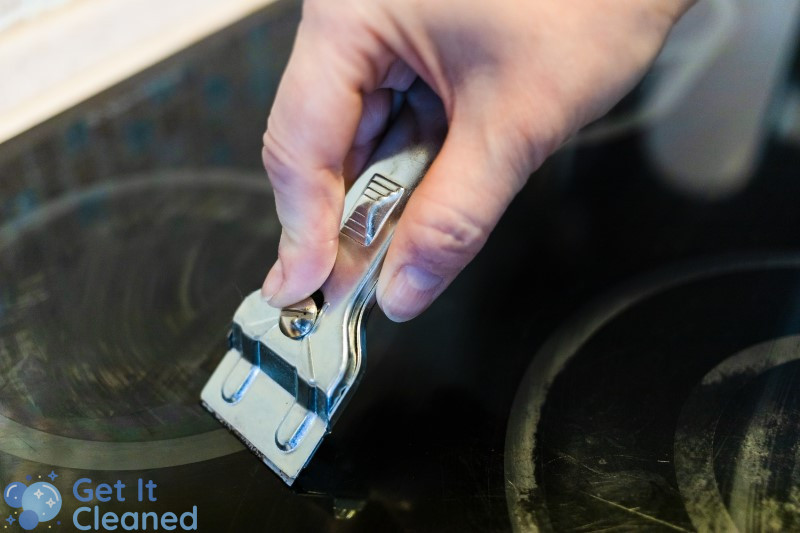
How do I prevent scratches on my glass hob?
You need to work carefully and make sure you use the right tools to prevent scratches from appearing on the surface of your hobs. Regularly clean your ceramic hob to maintain its appearance and functionality, and to prevent food remnants from caking on. When treating caked-on food particles on the glass surface of your hobs, and especially burnt-on residue, make sure to leave the cleaning product to sit and do its job before you start working with the plastic scraper. The same goes for burn marks.

